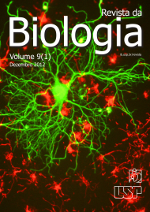Dimorphandra gardneriana Tulasne (Fava d’anta) - An approach ethnobotanical and risk of extinction
DOI:
https://doi.org/10.7594/revbio.09.01.02Keywords:
Fava d’anta, Dimorphandra gardneriana, Exploitation, Ecological sustainabilityAbstract
Dimorphandra gardneriana Tulasne (Legumimosae), popularly known as fava d’anta, is a plant widely distributed in the Brazilian Cerrado, occurring in the Chapada do Araripe, located in the South of the state of Ceara. Its fruits are exploited to obtain rutin and quercetin, both are bioflavonoids with several pharmacological activities studied. The extraction of D. gardneriana is an important source of income, especially for residents of communities surrounding the extraction region of the Chapada do Araripe. However, uncontrolled extraction threatens this species to extinction. Given the above, actions like the development of sustainable sampling techniques, or studies in genetics should be implemented to ensure the conservation of this species.Downloads
Download data is not yet available.
Downloads
Published
2018-04-23
Issue
Section
Revisão
License
We ensure that our journal does not retain any copyright and that these are exclusive of the author(s) of the text. In that sense, we intend to break any restrictions to the published material and to achieve more intensely our goal of communicating science.
How to Cite
Landim, L. P., & Costa, J. G. M. da. (2018). Dimorphandra gardneriana Tulasne (Fava d’anta) - An approach ethnobotanical and risk of extinction. Revista Da Biologia, 9(1), 6-11. https://doi.org/10.7594/revbio.09.01.02






